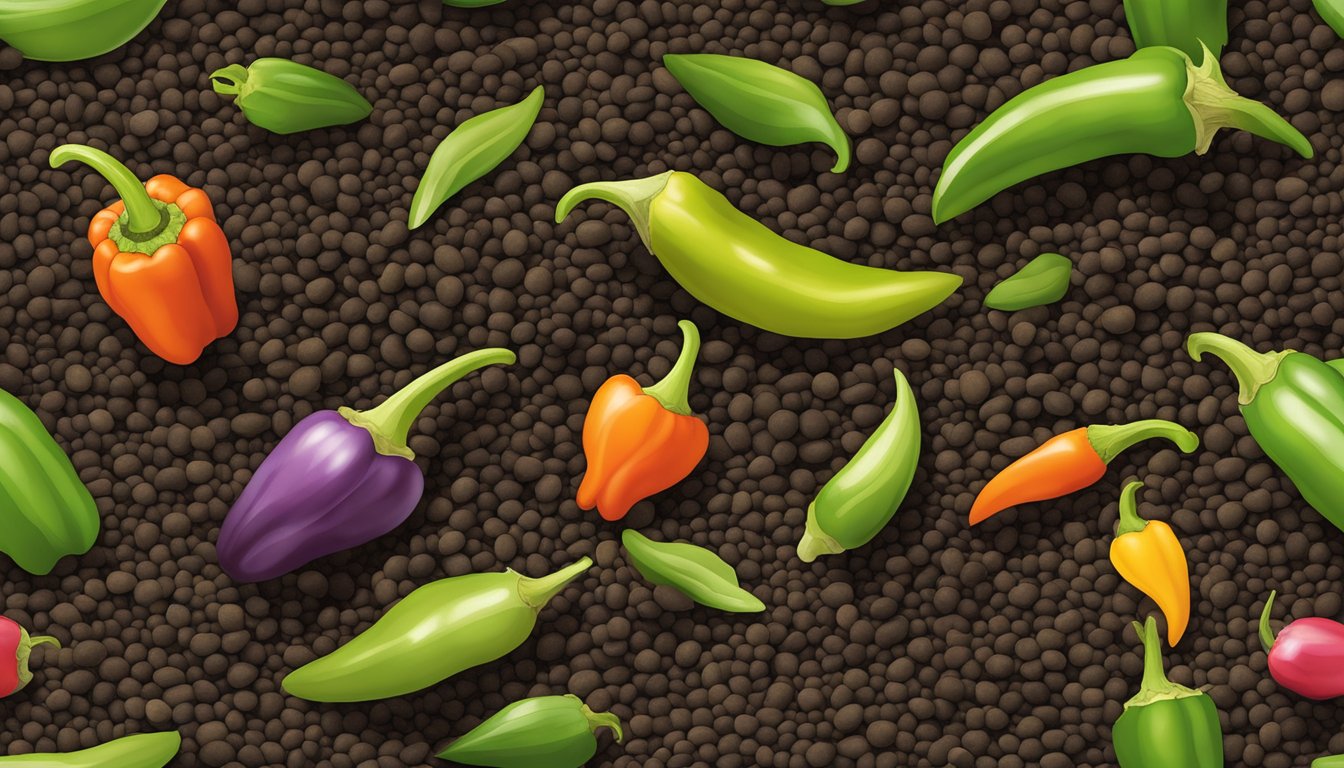TheHerbProf.com is a treasure trove of knowledge for those interested in natural healing and herbal remedies. The website is run by Paul Johnston MD. A naturopathic who has not only received extensive education in the field but also has personal experience in self-healing.
Pepper seeds not sprouting can be a frustrating experience for any gardener. It can be discouraging to put effort into planting seeds only to have them fail to germinate. However, there are several reasons why pepper seeds may not be sprouting, and there are steps that can be taken to increase the chances of successful germination.
One reason why pepper seeds may not be sprouting is due to improper soil temperature. According to a search result from GreenUpside.com, the ideal soil temperature for pepper seed germination is between 65 to 75 degrees Fahrenheit (18 to 24 degrees Celsius). If the temperature is too low, the seeds may not germinate at all, or they may develop into weaker plants. On the other hand, if the temperature is too high, the seeds may dry out or become damaged. Therefore, it is important to monitor soil temperature and make adjustments as necessary.
Another potential reason why pepper seeds may not be sprouting is due to poor seed quality. As a search result from GrowHotPeppers.com suggests, it is important to inspect seeds before planting and avoid using any that are discolored or smaller than the rest. Additionally, it is recommended to use fresh seeds and store them in a cool, dry place until ready to plant. By taking these steps, gardeners can increase the chances of successful germination and ultimately grow healthy pepper plants.
Understanding Pepper Seed Germination
Germination Process
As a gardener, it is important to understand the germination process of pepper seeds. Germination is the process by which a seed develops into a new plant. It is a complex process that involves several factors. When a pepper seed is planted, it needs to be in the right environment to germinate. The seed will absorb moisture and begin to swell, which will trigger the germination process. The first root, known as the radicle, will emerge from the seed, followed by the shoot.
Factors Affecting Germination – Pepper Seeds Not Sprouting
There are several factors that can affect the germination of pepper seeds. One of the most important factors is temperature. Pepper seeds require a warm temperature to germinate. The ideal temperature range for pepper seed germination is between 80-90°F (27-32°C). If the temperature is too low, the seeds will not germinate. Additionally, if the temperature is too high, it can cause the seeds to dry out and become non-viable.
Another important factor is moisture. Pepper seeds require adequate moisture to germinate. If the seeds are too dry, they will not germinate. On the other hand, if the seeds are too wet, they can rot and become non-viable. It is important to keep the soil moist but not waterlogged.
The viability of the seeds is also important. Pepper seeds that are more than two years old may not germinate or have a lower germination rate. It is important to use fresh seeds for the best results.
Dormancy is another factor that can affect the germination of pepper seeds. Seeds have a natural dormancy period that prevents them from germinating until the conditions are right. Breaking dormancy can be achieved by providing the right temperature range and maintaining adequate moisture levels.
Understanding the germination process and the factors that affect it is crucial for successful pepper seed germination. By providing the ideal conditions of temperature and moisture, using fresh seeds, and breaking dormancy, gardeners can ensure a high germination rate and healthy plants.
Preparation for Planting
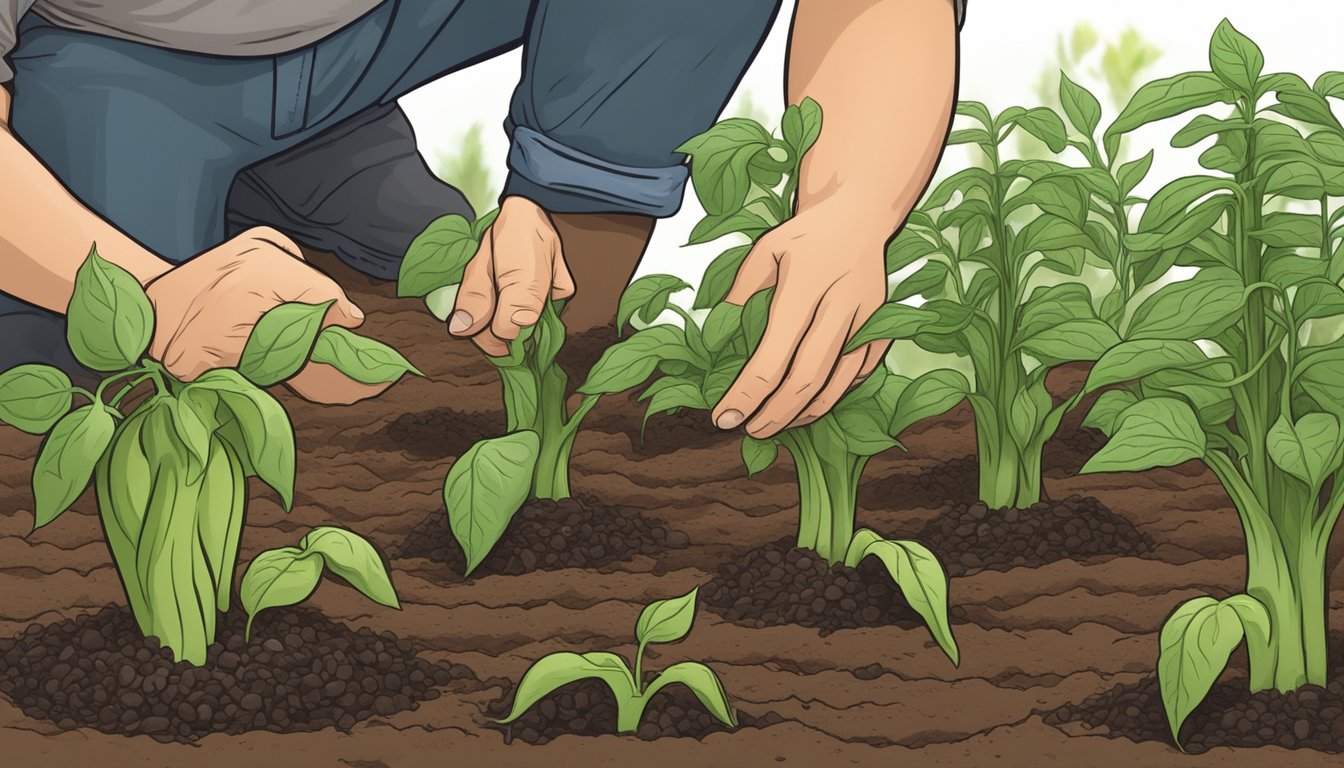
As someone who has had trouble with pepper seeds not sprouting in the past, I’ve learned that proper preparation is key to success. In this section, I’ll cover the steps I take to prepare for planting pepper seeds.
Selecting Quality Seeds – Pepper Seeds Not Sprouting
The first step in preparing for planting is to select quality seeds. It’s important to choose seeds from a reputable source, as this can greatly affect the success of your pepper plants. Look for seeds that are plump and firm, and avoid any that are discolored or smaller than the rest.
Soil and Seed Tray Preparation
Once you have your seeds, it’s time to prepare the soil and seed tray. I like to use a mixture of compost, seed starter mix, and vermiculite for my soil. This provides a good balance of nutrients and drainage for the seeds.
To prepare the seed tray, fill it with the soil mixture to about 1/2 inch below the top. Make sure the soil is moist but not waterlogged. Then, use a pencil or other small tool to make a small hole in the center of each cell. The hole should be about 1/4 inch deep.
Once the holes are made, it’s time to plant the seeds. Place one seed in each hole and cover it with soil. Gently press down on the soil to ensure good contact between the seed and the soil.
Now that the seeds are planted, it’s important to keep the soil moist but not waterlogged. I like to mist the soil with a spray bottle to avoid disturbing the seeds. It’s also important to keep the seed tray in a warm location, as pepper seeds require warm temperatures to germinate.
By following these steps, you can greatly increase your chances of success when planting pepper seeds. Remember to choose quality seeds, prepare the soil and seed tray properly, and keep the soil moist and warm. With a little patience and care, you’ll soon have healthy pepper plants sprouting up in your garden!
Optimal Growing Conditions – Pepper Seeds Not Sprouting
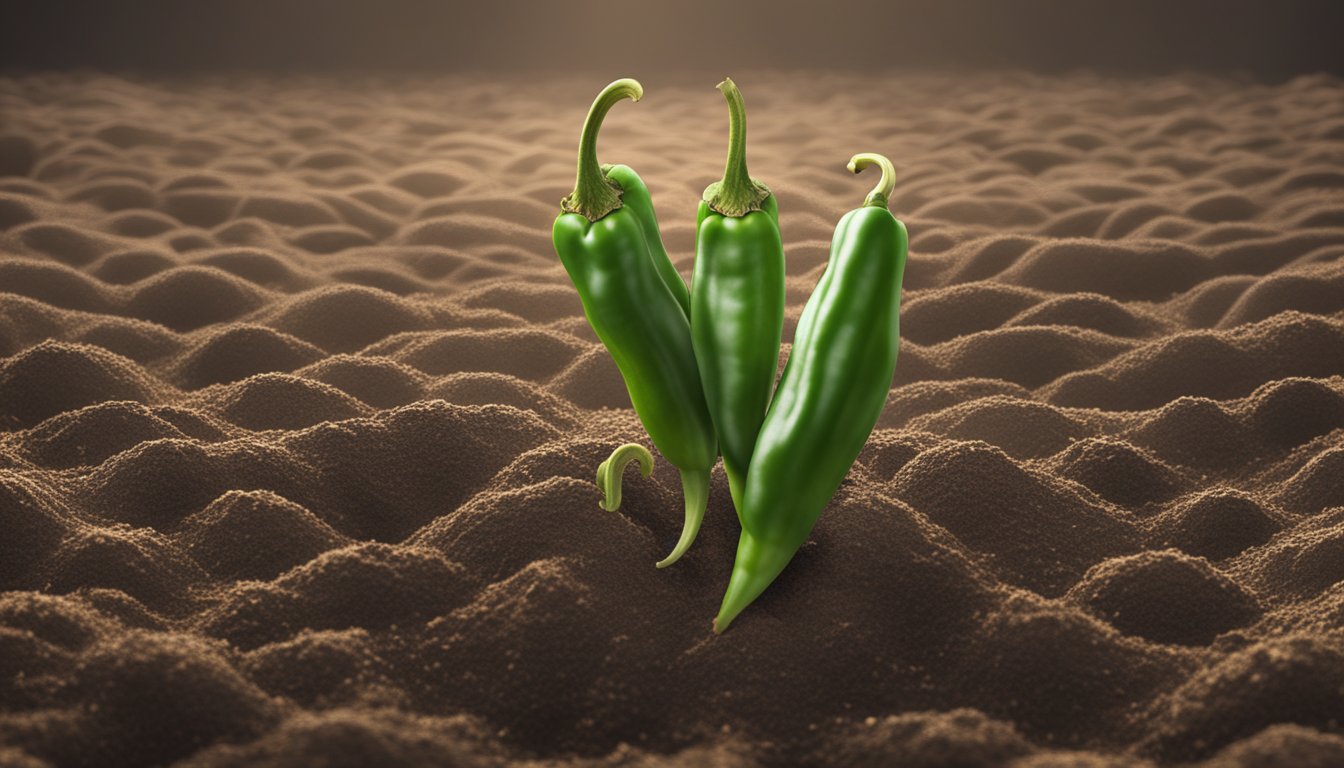
Temperature Control
Maintaining the optimal temperature is crucial for the germination of pepper seeds. According to my research, the optimal soil temperature for pepper seed germination is around 85°F. However, the temperature of your home or greenhouse may not be warm enough to achieve this. In such cases, using a heat mat can help speed up the germination process. You can also try using space heaters or baseboard heaters in the room where you are starting your seeds. It’s important to keep the soil temperature between 80°F to 90°F to help pepper seeds break dormancy.
Light Requirements – Pepper Seeds Not Sprouting
Pepper seeds require a lot of light to germinate properly. If you are growing your peppers indoors, you need to make sure they get enough light. You can use grow lights to provide the necessary light for your pepper seeds. According to my research, it’s important to keep the lights on for at least 12-16 hours a day.
Watering Techniques
Over-watering is a common mistake when starting peppers. Watering cools the soil and invites fungal growth, which can harm germination. On the other hand, under-watering can also hinder germination. It’s important to keep the soil moist but not too wet. According to my research, the optimal moisture level for pepper seeds is around 70%.
Humidity and Air Circulation
Humidity and air circulation are also important factors to consider when growing pepper seeds. It’s important to maintain a high level of humidity around your pepper seeds. You can use a humidity dome to create a humid environment around your pepper seeds. Proper air circulation is also important for the healthy growth of your pepper seeds. A small fan can be used to circulate the air around your pepper seeds.
By following these optimal growing conditions, you can ensure that your pepper seeds will sprout in no time.
Caring for Germinating Seeds – Pepper Seeds Not Sprouting
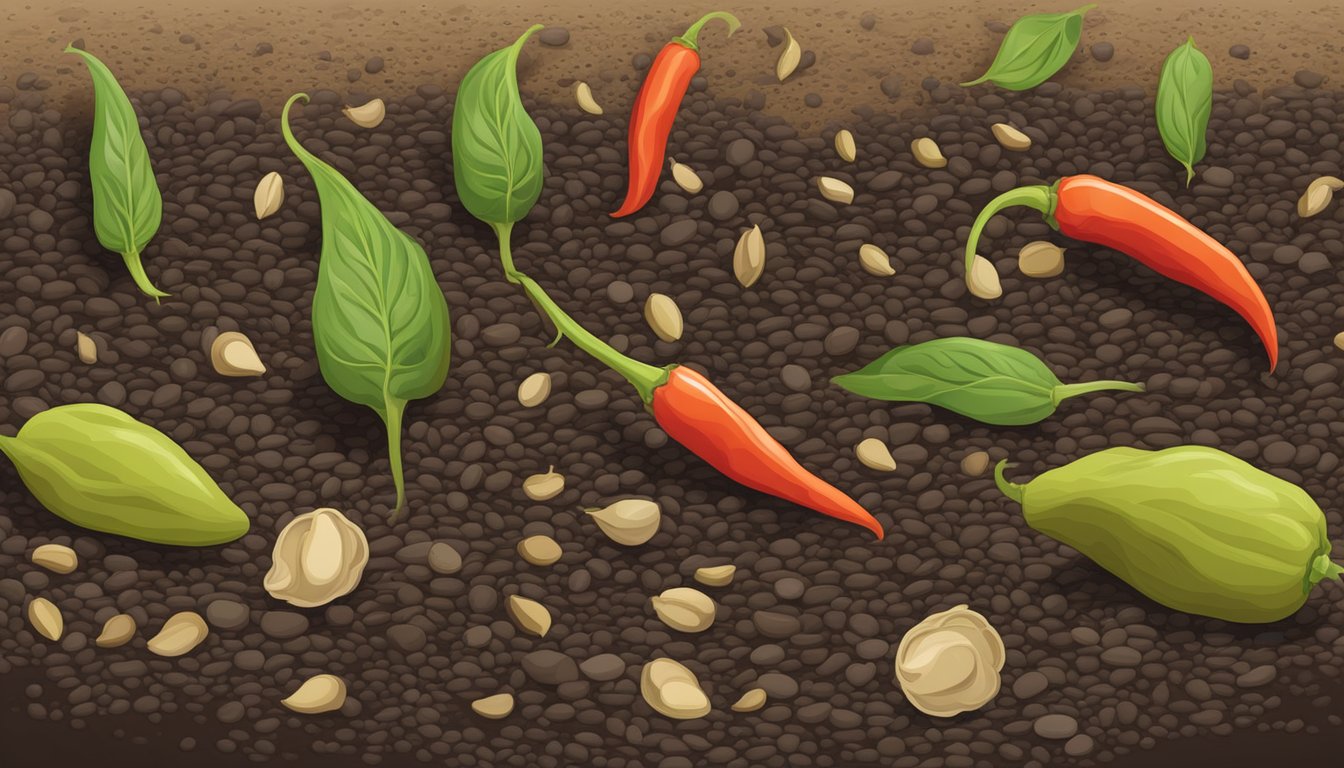
As someone who has had difficulty with pepper seeds not sprouting in the past, I’ve learned that there are a few key things to keep in mind when caring for germinating seeds. Here are a couple of tips that have helped me in the past:
Monitoring Soil Moisture
One of the most important things to keep in mind when caring for germinating seeds is to monitor soil moisture. Seeds need to be kept moist in order to germinate, but they also need to be able to breathe. Overwatering can cause seeds to rot, while underwatering can cause them to dry out and die.
To ensure that soil moisture is just right, I like to use a moisture meter. This handy tool can help you determine whether your soil is too wet, too dry, or just right. If you don’t have a moisture meter, you can also stick your finger into the soil to determine whether it feels moist or dry.
Using Growth Aids
Another thing that can help with seed germination is using growth aids. One growth aid that I’ve found to be particularly effective is chamomile tea. Chamomile tea contains natural compounds that can help to promote seed germination.
To use chamomile tea, simply brew a cup of chamomile tea and allow it to cool. Then, soak your seeds in the tea for 24 to 48 hours before planting. This can help to soften the seed coat and promote faster germination.
Another growth aid that can be helpful is a seedling heat mat. These mats provide gentle, consistent heat to your seeds, which can help to promote faster germination. Just be sure to follow the manufacturer’s instructions carefully, as too much heat can be harmful to your seeds.
By monitoring soil moisture and using growth aids like chamomile tea and seedling heat mats, you can help to ensure that your pepper seeds germinate successfully.
Common Issues and Solutions – Pepper Seeds Not Sprouting
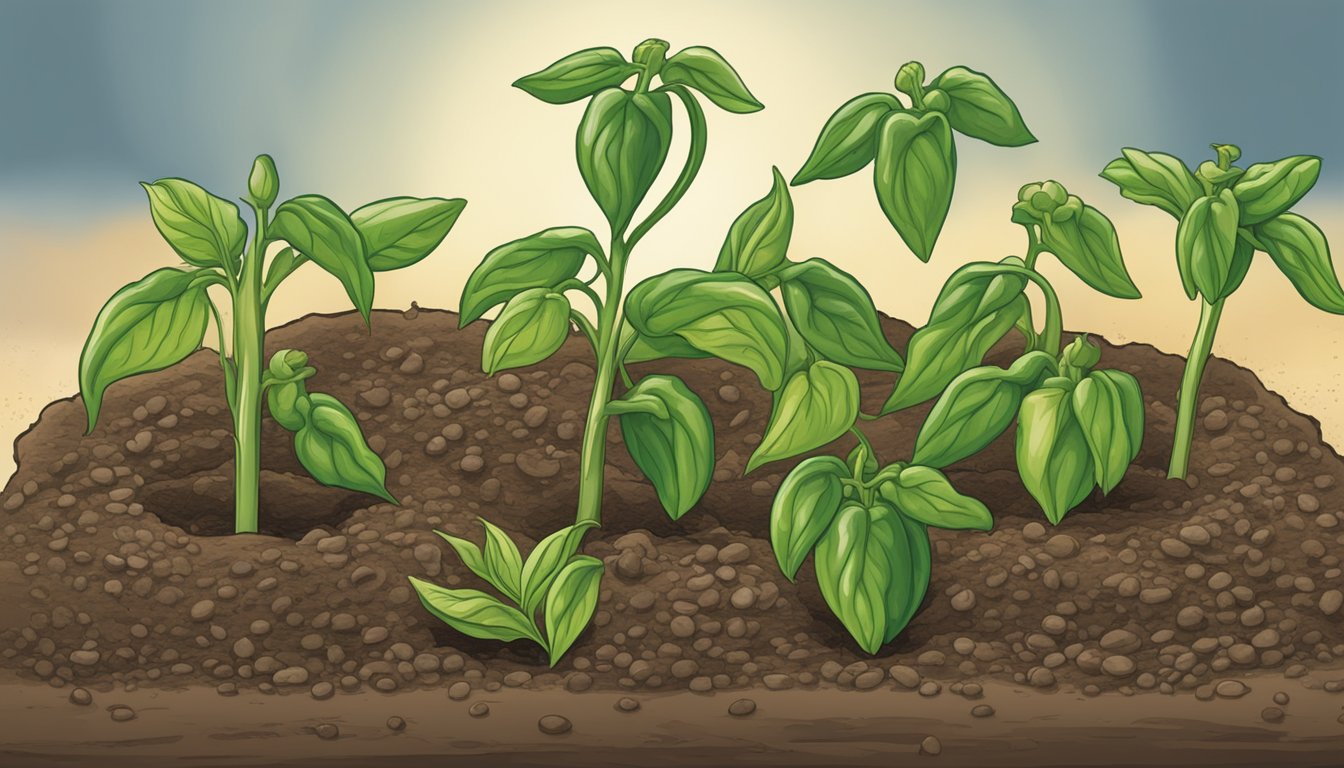
Troubleshooting Poor Germination
Pepper seeds can fail to germinate due to a variety of reasons. One of the most common reasons for poor germination is improper soil temperature. If the soil is too cold or too hot, the seeds may not sprout. The optimal soil temperature for pepper seed germination is between 75-85 degrees Fahrenheit. If the temperature is too low, the seeds may take longer to germinate or not germinate at all.
Another reason for poor germination is improper watering. Overwatering or underwatering the seeds can cause them to fail to sprout. It is important to keep the soil moist but not waterlogged. If the soil is too wet, the seeds may rot or develop fungal diseases such as damping off.
Old seeds can also lead to poor germination rates. As seeds age, their germination rate decreases. It is best to use fresh seeds for the highest germination rates.
Preventing Mold and Diseases
Pepper seeds are susceptible to mold and fungal diseases, especially during the germination process. To prevent mold and fungal diseases, it is important to keep the soil moist but not waterlogged. Overwatering can lead to the development of fungus and damping off. It is also important to provide good air circulation around the seeds.
Using a sterile seed-starting mix can also help prevent the development of mold and fungal diseases. Sterile mixtures are free from pathogens that can cause diseases in the seeds.
In summary, to prevent poor germination rates and the development of mold and fungal diseases, it is important to maintain the proper soil temperature, provide adequate moisture, use fresh seeds, and provide good air circulation. By following these tips, you can increase the chances of successful pepper seed germination.
Transplanting and Early Growth – Pepper Seeds Not Sprouting
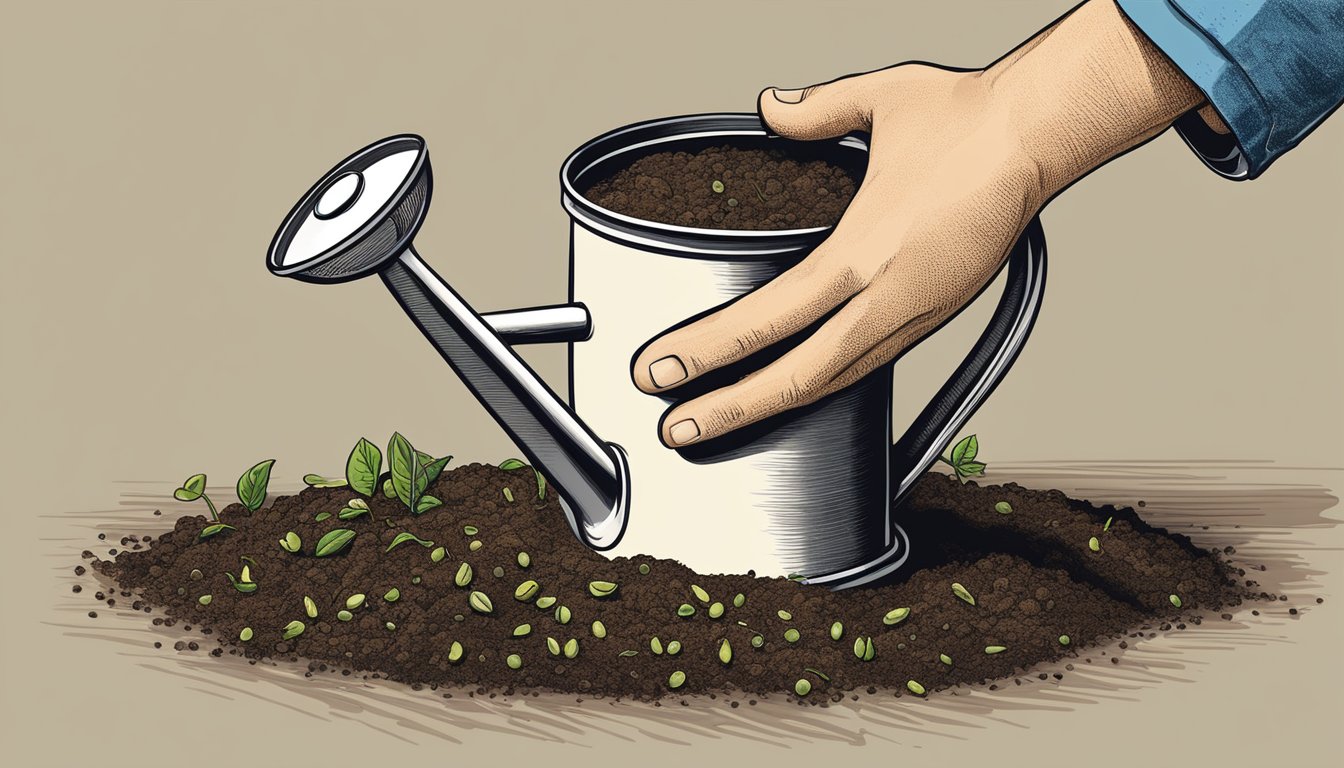
When to Transplant Seedlings
As pepper seedlings grow, they will eventually outgrow their small starter pots and need to be transplanted to larger containers. It is important to transplant the seedlings at the right time to avoid stunting their growth.
I usually wait until the seedlings have at least two sets of true leaves before transplanting them. True leaves are the second set of leaves that grow after the initial cotyledons. At this stage, the seedlings are more mature and can handle the stress of transplanting better.
Caring for Young Pepper Plants – Pepper Seeds Not Sprouting
Once your seedlings are transplanted, it is important to provide them with the right conditions for growth. Pepper plants need plenty of sunlight, so make sure they are placed in a sunny location. If you are growing them indoors, consider using grow lights to supplement natural light.
In addition to sunlight, young pepper plants need to be well-watered. Keep the soil consistently moist, but not waterlogged. Overwatering can lead to root rot and other problems.
As the plants grow, you may need to provide support in the form of stakes or cages. This will help prevent the plants from falling over as they get taller and heavier.
By following these tips, you can give your pepper seedlings the best chance of growing into healthy, mature pepper plants.
Seed Storage and Viability
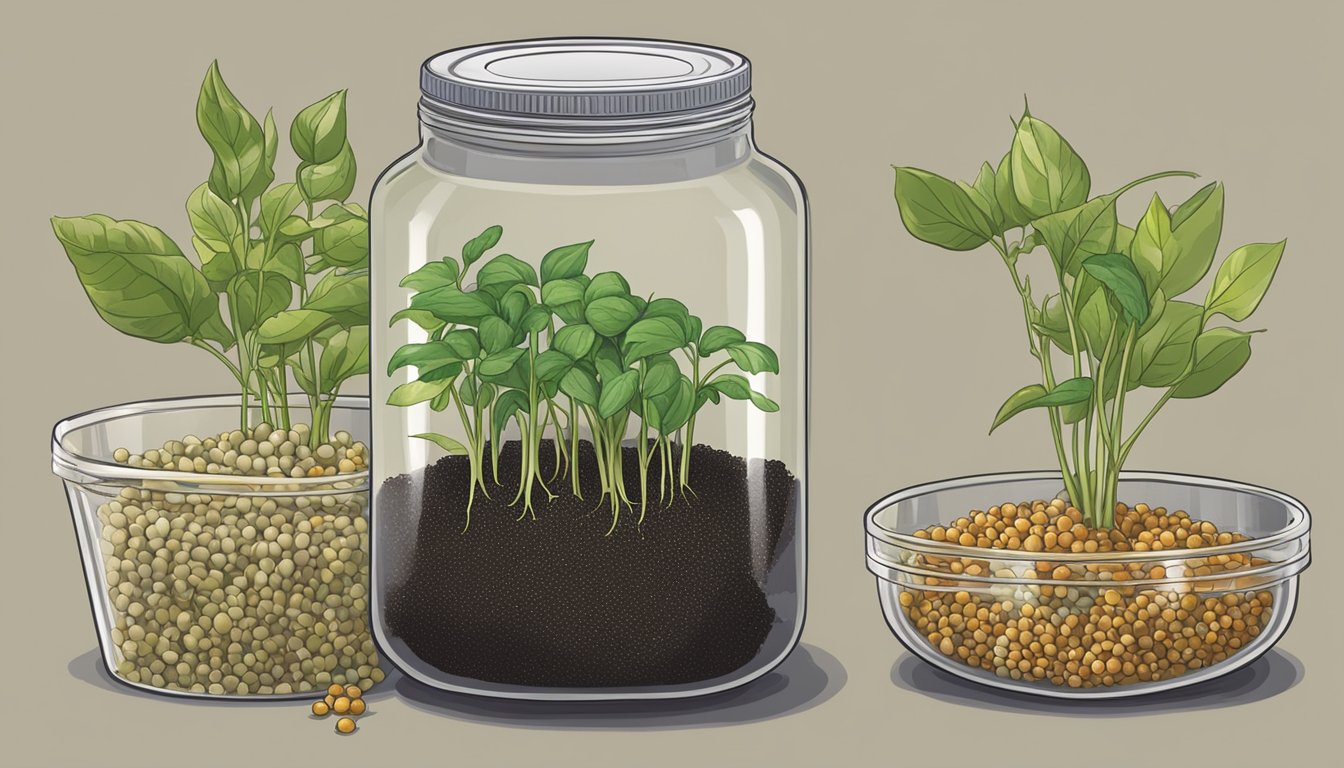
As someone who has grown peppers for many years, I know firsthand how frustrating it can be when pepper seeds fail to sprout. One of the most common reasons for this is poor seed viability. In this section, I will discuss how to properly store unused seeds and test seed viability to ensure that you have the best chance of growing viable pepper plants.
Storing Unused Seeds – Pepper Seeds Not Sprouting
Proper seed storage is essential to maintain seed viability. Seeds should be stored in a cool, dry, and dark place. Airtight containers, such as glass jars or plastic bags, are ideal for storing seeds. It is also important to label the container with the seed type and date of storage.
While some gardeners store seeds in the fridge or freezer, this is not necessary for most seeds. In fact, storing seeds in the fridge or freezer can actually decrease seed viability if the seeds are not properly dried and sealed. For most seeds, a cool, dry, and dark place, such as a closet or pantry, is sufficient for seed storage.
Testing Seed Viability
Testing seed viability is an important step in determining whether or not your seeds will germinate. To test seed viability, you can perform a simple seed viability test.
To perform a seed viability test, take 10 seeds and place them on a damp paper towel. Fold the paper towel over the seeds and place it in a plastic bag. Leave the bag in a warm, dark place for a few days. Check the seeds every day to see if they have sprouted. If more than 50% of the seeds have sprouted, then the seeds are still viable and should be good to use. If less than 50% of the seeds have sprouted, then the seeds may not be viable and should be discarded.
By properly storing and testing seed viability, you can ensure that you are using viable seeds and increase your chances of growing healthy pepper plants.
Pepper Varieties and Characteristics
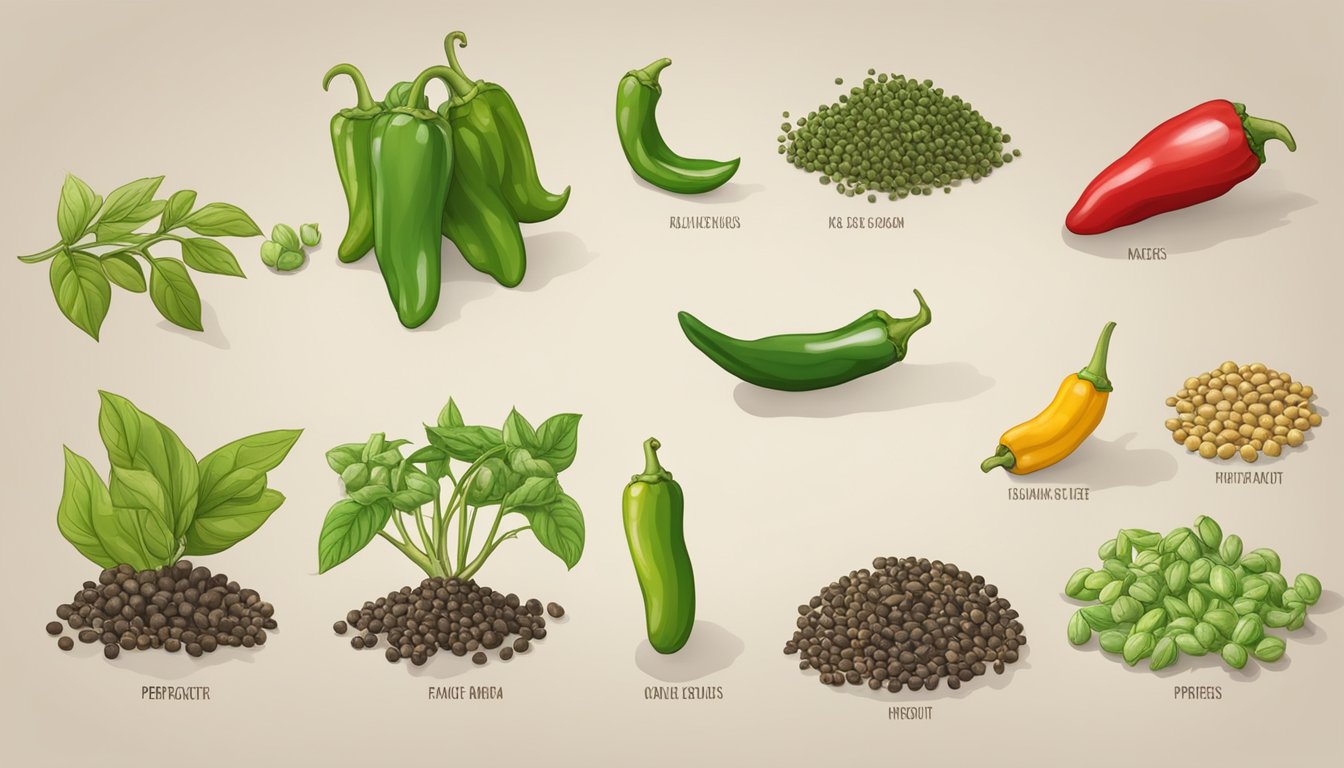
Choosing the Right Pepper Variety – Pepper Seeds Not Sprouting
When it comes to growing peppers, there are many varieties to choose from, each with its unique characteristics. Some of the most popular varieties are bell pepper, jalapeno, habanero, and ghost peppers.
Bell peppers are known for their mild flavor and are often used in salads, stir-fries, and stuffed pepper dishes. These peppers are available in a variety of colors, including red, yellow, orange, and green.
Jalapeno peppers are hotter than bell peppers, but still relatively mild compared to other pepper varieties. They are commonly used to add a spicy kick to dishes like nachos, tacos, and salsas.
Habanero peppers are much hotter than jalapenos and are often used in hot sauces, marinades, and spicy dishes. These peppers have a fruity flavor and are available in a variety of colors, including orange, red, and green.
Ghost peppers, also known as Bhut Jolokia, are one of the hottest peppers in the world. These peppers are often used in hot sauces and spicy dishes, but be warned, they are not for the faint of heart.
When choosing a pepper variety, consider your personal taste preferences and the heat level you are comfortable with.
Understanding Varietal Differences
Pepper varieties can be classified into two main groups: Capsicum annuum and Capsicum chinense. Capsicum annuum includes milder pepper varieties like bell peppers and jalapenos, while Capsicum chinense includes hotter varieties like habaneros and ghost peppers.
It is important to note that within each group, there can be significant differences in heat level and flavor. For example, some jalapeno peppers can be much hotter than others, depending on factors like growing conditions and genetics.
When growing peppers, it is important to choose a variety that is well-suited to your climate and growing conditions. Some pepper varieties are more tolerant of heat and drought, while others prefer cooler temperatures and more moisture.
Choosing the right pepper variety is an important factor in the success of your pepper garden. Consider your personal taste preferences, heat tolerance, and growing conditions when selecting a variety.
Advanced Germination Techniques – Pepper Seeds Not Sprouting
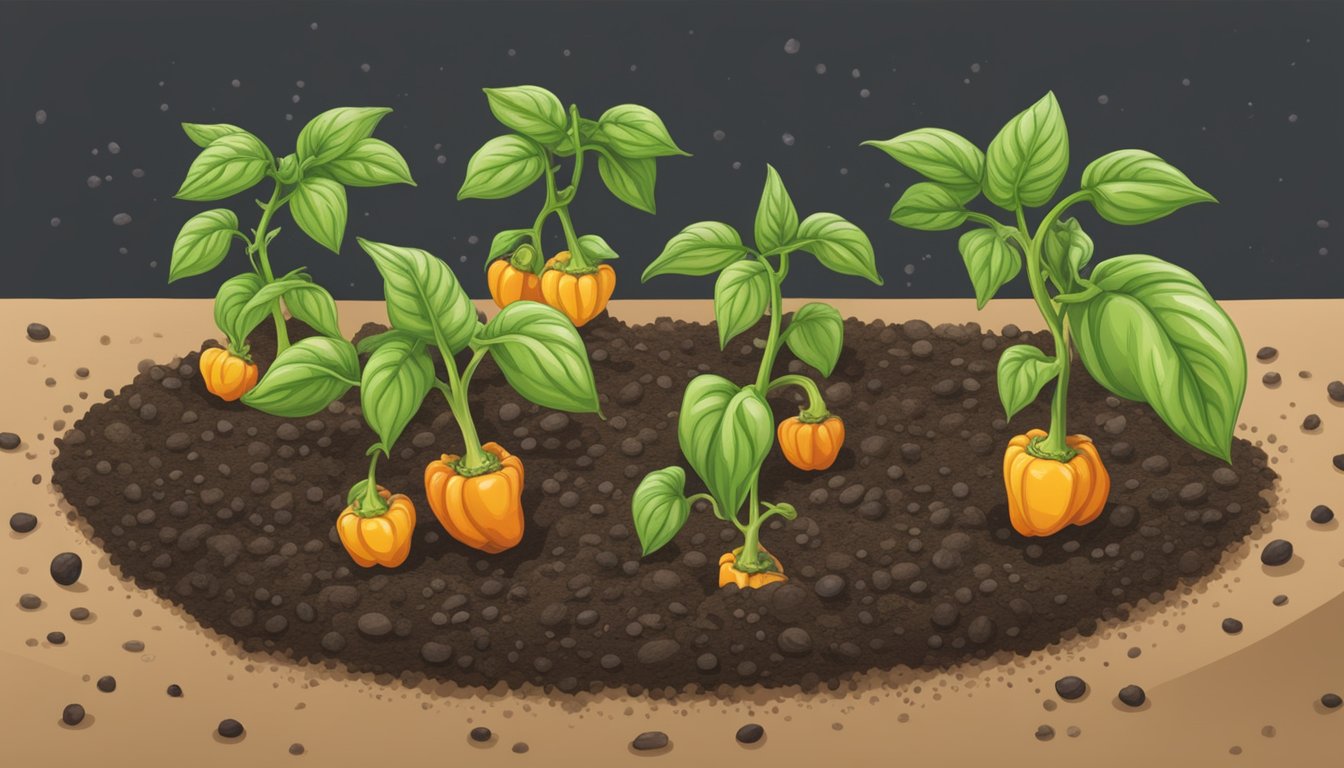
As a seasoned gardener, I have discovered some advanced germination techniques that can help you achieve successful pepper seed germination. In this section, I will share some alternative germination methods and tricks to maximize your germination success.
Alternative Germination Methods – Pepper Seeds Not Sprouting
If the traditional method of germinating pepper seeds is not working for you, there are alternative methods you can try. One such method is the paper towel method. This involves placing the pepper seeds between two moist paper towels and placing them in a plastic bag. After a few days, the seeds will start to sprout, and you can then plant them in soil.
Another alternative method is the bag method. This involves placing the pepper seeds in a plastic bag with a damp paper towel. Seal the bag and place it in a warm place. After a few days, the seeds will start to germinate, and you can then plant them in soil.
Maximizing Germination Success
To maximize your germination success, there are some tricks you can use. Soaking pepper seeds in water for 24 hours before planting can help speed up the germination process. Additionally, maintaining a temperature of 65 to 75 degrees Fahrenheit (18 to 24 degrees Celsius) is ideal for pepper seed germination. You can use a heat mat to maintain a consistent temperature.
Another technique is to use a video tutorial to guide you through the germination process. This can help you avoid common mistakes and ensure reliable germination.
By using these advanced germination techniques, you can increase your chances of successful pepper seed germination. With a little patience and some trial and error, you can enjoy a bountiful pepper harvest.
The Spicy Connection: Pepper Seeds Not Sprouting and The Herb Prof
Let’s spice things up with pepper seeds not sprouting and its connection to our herbal haven, theherbprof.com. Ready to turn up the heat?
Firstly, pepper seeds not sprouting is a common gardener’s dilemma. It’s a test of patience and perseverance. Sounds familiar? That’s because theherbprof.com helps you navigate through similar challenges in the herbal world!
Secondly, both pepper seeds and theherbprof.com are about growth. Just like a seed needs the right conditions to sprout, theherbprof.com provides the right environment for your herbal knowledge to flourish.
Lastly, they both aim to enrich our lives. Peppers add a kick to our meals, while theherbprof.com spices up our minds with herbal wisdom. You can check our homepage here!
So, there you have it! Pepper seeds not sprouting and theherbprof.com are two peas in a spicy pod. They both symbolize patience, growth, and enrichment. Now, isn’t that a hot piece of information to share at your next garden party? Keep growing, folks!
References – Pepper Seeds Not Sprouting
Little Herb Encyclopedia, by Jack Ritchason; N.D., Woodland Publishing Incorporated, 1995
The Ultimate Healing System, Course Manual, Copyright 1985, Don Lepore
Planetary Herbology, Michael Tierra, C.A., N.D., Lotus Press, 1988
Handbook of Medicinal Herbs, by James A. Duke, Pub. CRP Second Edition 2007
The Complete Medicinal Herbal, by Penelope Ody, Published by Dorling Kindersley
Check the Following Articles!
Grow Coffee in Greenhouse: Tips For Successful Cultivation
How Long Does it Take Seeds to Sprout in Soil?
Leggy Seedlings Tomato: How to Prevent and Fix Stretching
Frequently Asked Questions – Pepper Seeds Not Sprouting
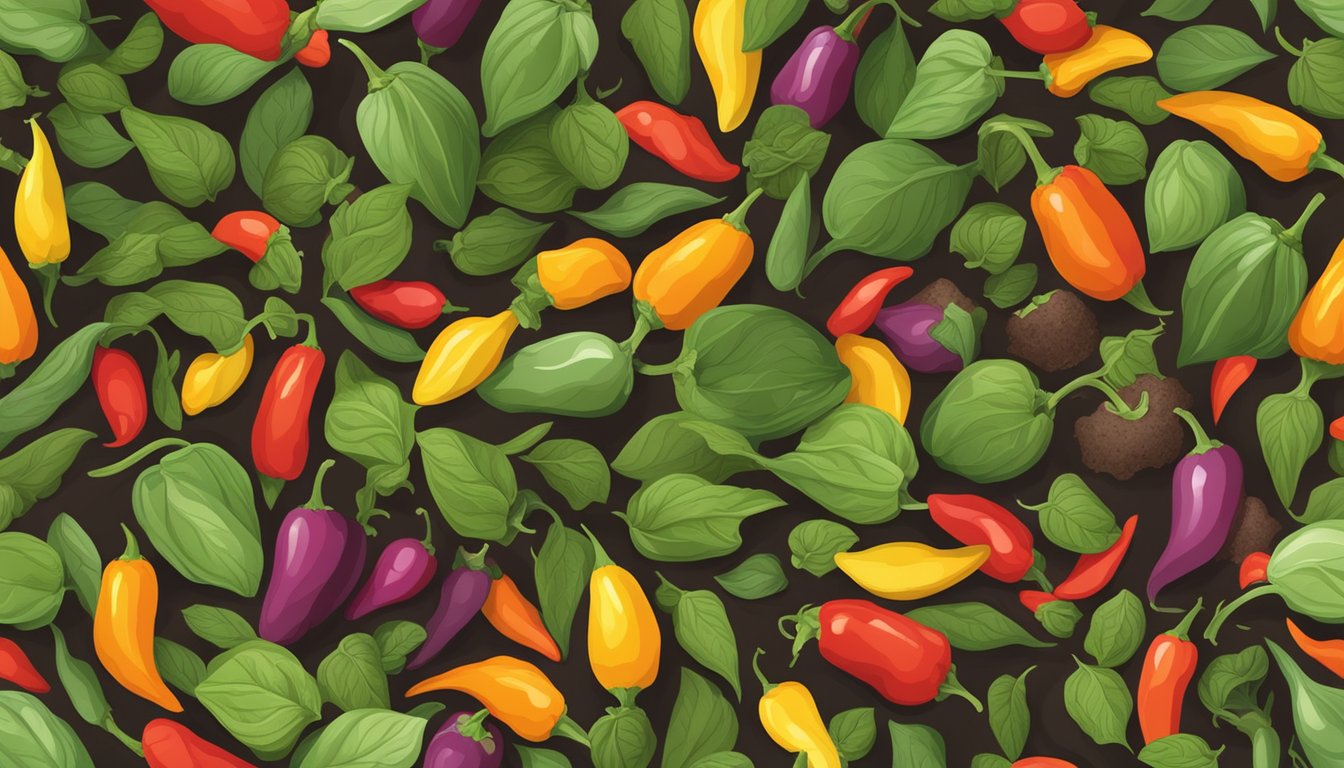
What are the optimal conditions for germinating pepper seeds?
Pepper seeds require warm soil temperatures in the range of 65 to 75 degrees Fahrenheit (18 to 24 degrees Celsius) to germinate. The soil should be moist but not waterlogged. Pepper seeds also require good air circulation and light, so avoid burying them too deep in the soil.
How long does it typically take for pepper seeds to sprout under ideal conditions?
Under optimal conditions, pepper seeds will usually sprout within 7 to 14 days. However, some varieties may take longer, so be patient and continue to provide proper care.
What pre-planting treatments can enhance the germination rate of pepper seeds?
Pre-soaking the seeds in warm water for 24 hours can help to soften the seed coat and encourage germination. Some gardeners also recommend pre-soaking the seeds in a weak chamomile tea solution to help prevent fungal issues.
Are there common mistakes to avoid when trying to sprout pepper seeds?
One common mistake is to plant the seeds too deeply in the soil. Pepper seeds should be planted no more than ¼ inch deep. Another mistake is to overwater the seeds, which can lead to rotting. It’s important to keep the soil moist but not waterlogged.
How can I tell if my pepper seeds are viable for germination?
To test the viability of your pepper seeds, place them in a bowl of water. The seeds that sink to the bottom are viable, while the ones that float are likely not viable and should be discarded.
What should I do if my pepper seeds still aren’t sprouting after the expected time?
If your pepper seeds still haven’t sprouted after the expected time, it may be due to low soil temperatures or other unfavorable growing conditions. Try moving the seeds to a warmer location or adjusting the moisture levels. If the seeds still don’t sprout, it may be time to start over with fresh seeds.
